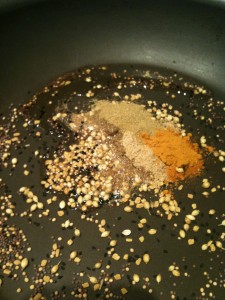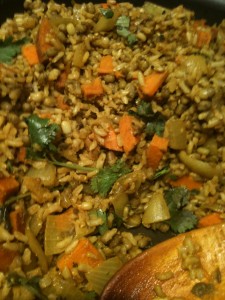Welcome back to Healing Foods on Friday! I hope you’ve had a beautiful week. I want to start today’s post with a little background about why this healing foods series is so important to me.
Food therapies are a vital component of natural medicine; it’s possible for your diet to greatly enhance the healing effect of herbal medicines, or for it to completely oppose and undermine them. Understanding how to eat for your particular constitution and to support any herbal therapies that you’re using is an important part of health maintenance. If we accept that herbs exist on a continuum that lies between food and drugs (as they have some nourishing food-like properties as well as some properties and constituents that affect the body more strongly,) we must also accept that food lies on this continuum of healing as well.
Food therapies have the advantage of being gentle and supportive of the body’s natural ability to heal. They also have no side effects, as long as one avoids foods to which one has an allergy or an intolerance. There is also a powerful psychological effect that comes from preparing food for yourself and your family with the intention of bringing about healing. The alchemy of the kitchen can be profoundly healing. Are you ready to try some food therapeutics for yourself?
One of the world’s most famous healing foods is a dish called kitcharee, which comes from Ayurveda. It is traditionally used as a food for convalescence and is prized for its ability to nourish people with all constitutional types. It is also used for a kind of “fasting,” taken as a mono-diet for days, or even weeks. It is a hypoallergenic food, can be easily made vegan by changing the traditional ghee for coconut oil, is gently detoxifying, and provides complete protein, fiber, complex carbohydrates, and the healing properties of herbs and spices. It’s easy to make, very affordable, and is a wonderful food to include in your diet. Here’s how to start reaping the benefits of this ancient recipe for yourself:

toasting the spices
Ingredients:
1 cup mung beans, dried
1/2 cup brown rice*
2 tbsp Virgin coconut oil, or sesame oil
2 tsp Turmeric
1 tbsp cumin, ground
1 tbsp coriander, ground
optional additions: vegetables & spices including fresh ginger, fresh garlic, onion, carrots, spinach, fenugreek, cumin seeds, mustard seeds….choose additions to suit your taste and your nutritional needs.
* white rice is traditional, and is better for people with very compromised digestion. For most people, brown rice offers a better nutritional profile.
Directions:
1. Soak mung beans and rice overnight. This removes phytates from the rice and improves the

kitcharee is healing & delicious
digestibility of the beans.
2. Drain beans and rice. Place in a pot and add water until beans and rice are completely covered (with 1-2 inches of water above the level of the beans and rice.) Bring up to the boil, reduce to a simmer, and cook uncovered until soft. There will still be water in the pot—and that’s ok!
Note: This can be done in advance if you’d like. You can refrigerate the cooked beans and rice until you’re ready to finish the dish.
3. Place coconut oil and spices into a frying pan and warm over medium heat until the spices become fragrant and start to cook gently in the oil.
4. Add any non-leafy vegetables that you’re using and cook them in the spices. Or, if you’re not using veggies, skip this step.
5. Add the cooked rice and beans to the frying pan and stir well to coat the rice and beans with the toasted spices. Warm through, and finish with the addition of leafy greens, or top with cilantro and a squeeze of lemon.
Kitcharee lends itself to endless variation. Some ideas include:
- Experiment with other spices to enhance the dish. Yummy possibilities include coriander seeds, cumin seeds, brown and yellow mustard seed, black pepper, nigella seeds, and fresh ginger.
- Add root vegetables like carrots & burdock, aliums like onions & garlic, or leafy greens like kale, spinach, and chard. Choose veggies according to their healing properties—or according to what’s seasonal and inspiring to you.
- Add more water to the dish to make it more soup-like and even easier to digest. I especially like to do this when I’m having kitcharee for breakfast.
- Stir in a sweet chutney like mango or tamarind for a treat. (Tamarind is my favorite!)
Kitcharee is a wonderful way to enjoy the flavors and harmony of Indian cuisine without all of the sodium and oil that can come along with enjoying Indian food in a restaurant. It’s a wonderful addition to your diet whether you just use it as a weekday meal, a balanced and surprisingly satisfying breakfast, or undertake a short “kitcharee fast” to nourish your body optimally while gently encouraging detoxification. I hope you’ll try this recipe!
